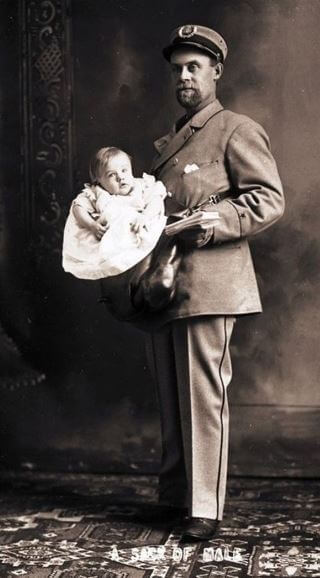 6
6




 02. 02. 2021
02. 02. 2021

In January 1913, a couple from Ohio used a new U.S. post office to send a very special shipment: their little son. Mr. Beagues paid 15 cents for a stamp and an unknown amount to insure a "package" of $ 50, then handed it over to a postal deliveryman, who delivered the boy to his grandmother's house, about a mile away.
When post offices began accepting shipments weighing more than four pounds on January 1, 1913, regulations about what could and could not be sent were unclear. People immediately began testing the limits by sending eggs, bricks, snakes, and other unusual "packages." So could they eventually mail their children? Technically, there was no postal prescription.
"The first few years of parcel delivery have been a bit of a mess," says Nancy Pope, chief curator of the history of the National Postal Museum. "Different cities went through different things depending on how their postmaster had just interpreted the regulations."

In the early days of the US parcel service, there were no clear instructions on what you could and could not mail.
Pope looked for seven cases of sending children by mail between 1913 and 1915, starting with a child from Ohio. It was not common to send their children by post, but over longer distances it was cheaper to pay for Railway Mail than to buy a passenger train ticket.
In addition, people who sent their children by mail did not pass them on to strangers. Many families in rural areas knew their mailman very well. However, these two viral photographs of postal workers with a child in a mailbox circulating online were staged as a joke. The postman may have carried a baby that could not walk yet, but he would certainly not let a baby with diapers sit in a pile of other mail.
In the case of May Pierstorff, whose parents sent her by post to her grandparents' house 1914 miles away in February 73, the post office who delivered her by post train was her relative. Idaho parents paid 53 cents for stamps they affixed to their nearly six-year-old daughter's coat. After Albert S. Burleson, the general manager of the post office, learned about the incident (as well as another question someone had asked this month about sending children by mail), he officially banned postal workers from accepting persons as parcels.
Nevertheless, the new regulation did not immediately prevent people from sending their children by post. A year later, the woman sent her six-year-old daughter from their Florida home to her father's home in Virginia. At 720 miles, it was the child's longest journey by mail that Pope had traced. It stood 15 cents on the stamps.
In August 1915, three-year-old Maud Smith made the last voyage of its kind via the U.S. Post as a human shipment. Her grandparents then sent her 40 miles across Kentucky to visit her sick mother. After the report appeared in the media, Inspector John Clark of the Cincinnati Railroad Division began investigating the case and asked why the postmaster in Caney, Kentucky had allowed the child to be sent by mail train, even though it was explicitly against the rules.
"I don't know if he lost his job, but he certainly had something to explain," says Pope.
Although Maud is probably the last successful child, people later tried to send their children by mail. In June 1920, John C. Koons, the deputy general manager of the post office, rejected two requests for children to be mailed on the grounds that they could not be classified as "harmless live animals," the Los Angeles Times reported.
Rosewood pendulum in the shape of a pyramid (35mm) on a silver chain (200mm). It serves as an aid in obtaining answers to life's questions.

Pendulum